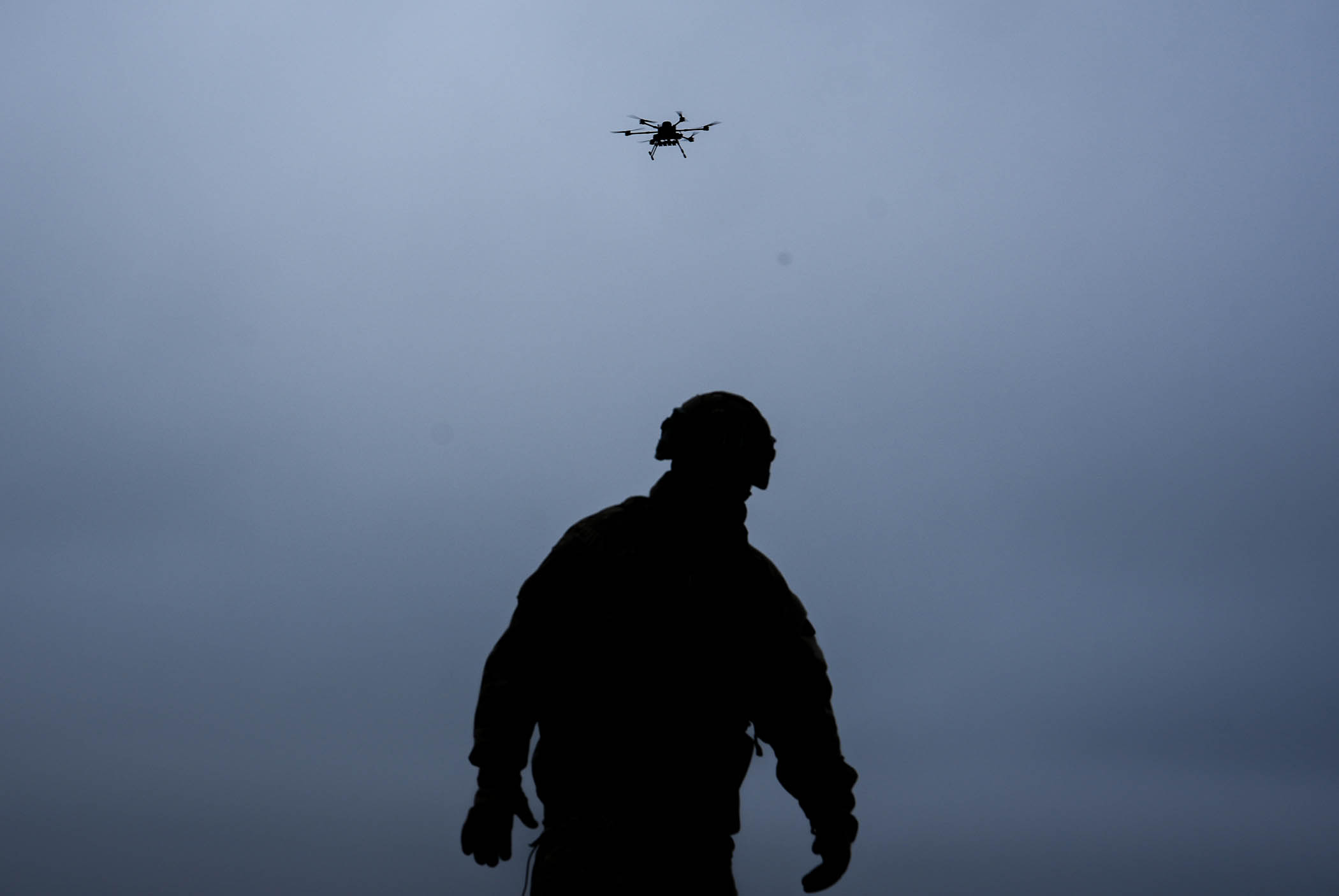A series of mysterious drone sightings at airports, military sites and near other critical infrastructure has caused alarm across Europe.
So what? The culprit has not been established. But fingers have been pointed at Russia for activity that
•
is paralysing major airports;
•
appears to be part of a broader hybrid campaign; and
•
has left European leaders scrambling to respond.
Shutdown. In recent months, drone sightings have temporarily closed airports in Copenhagen, Berlin, Munich, Frankfurt, Brussels, Liege, Oslo, Gothenburg and elsewhere. Dozens of flights have been cancelled, affecting thousands of travellers. The drones are not armed, but a collision with a passenger plane could be fatal.
Widespread. Drones have also appeared over military sites across Europe. Power plants, hospitals and defence factories have been targeted too. Germany alone is reportedly experiencing an average of three drone incursions a day.
Suspect #1. Most of the sightings are unexplained and there have been few arrests. European Commission president Ursula von der Leyen has accused the Kremlin of trying to “sow division”, although she did not blame Russia for all the incidents, while Denmark’s prime minister has accused Moscow of waging a “hybrid war”.
At sea. In some cases, Russian shadow tankers may have acted as launchpads. When drones shut down Copenhagen airport in September, for example, four Russian-linked ships were close to the Danish coast. One was subsequently boarded by French soldiers.
Retribution. Belgium has been heavily targeted. Earlier this month, Germany’s defence minister said he thought this was likely to be connected to efforts to seize €140 billion worth of frozen Russian assets held in Belgium and use them to purchase arms for Ukraine.
Coincidence. In September, as Sweden prepared to announce the sale of 150 fighter jets to Ukraine, drones appeared over its biggest naval base and the city of Malmö, which sits on a critical bridge shared with Copenhagen.
More coincidences. The incursions have increased in frequency since two dozen Russian drones flew over Poland during a strike on Ukraine on 9 September. Nato scrambled jets that cost £60 million in response to drones made of plywood and polystyrene and worth about £7,500. Only a handful were confirmed to have been shot down.
Broad front. The drone incursions appear to be part of a broader wave of grey zone attacks. These include acts of arson, the severing of undersea communications cables and hacks on Nato states, which have risen by 25 per cent in the past year.
Rationale. These operations could be designed to inflict a cost on Europe for supporting Ukraine, while shielding Russia behind a cloak of plausible deniability. Officials think some drones may be gathering intelligence. Certainly they have exposed weaknesses in air defences.
Enjoying the show. When a moderator asked Vladimir Putin why he was sending drones over Denmark last month, Putin compared the sightings to claims about UFOs and jokingly replied: “I won’t do it anymore.”
Solutions. European militaries are searching for cost-effective ways to address the problem. An Australian firm has signed a $84 million deal with a Nato state to deploy a system based on lasers, while Nordic Air Defence in Sweden is developing autonomous interceptor drones and missiles that can be fired out of a handheld cannon.
What’s more… The most ambitious initiative is a European-wide “drone wall” that can detect, jam and destroy Russian aerial vehicles. Plans are still vague but the bloc wants it to be ready by the end of 2027. That’s a long way away.
Photograph by Julia Demaree Nikhinson / AP Photo

